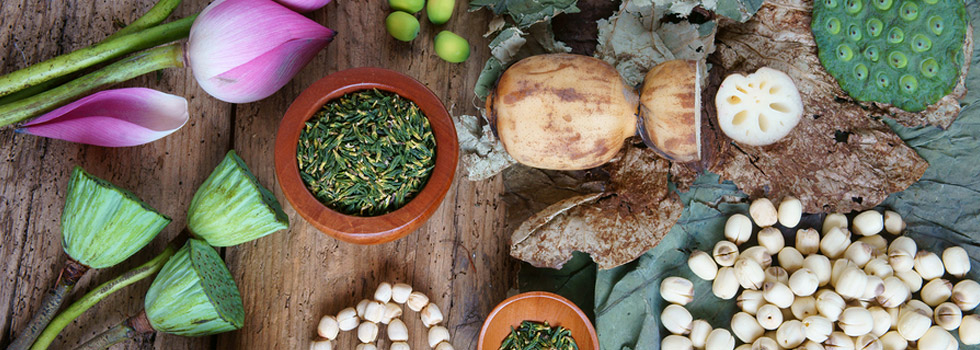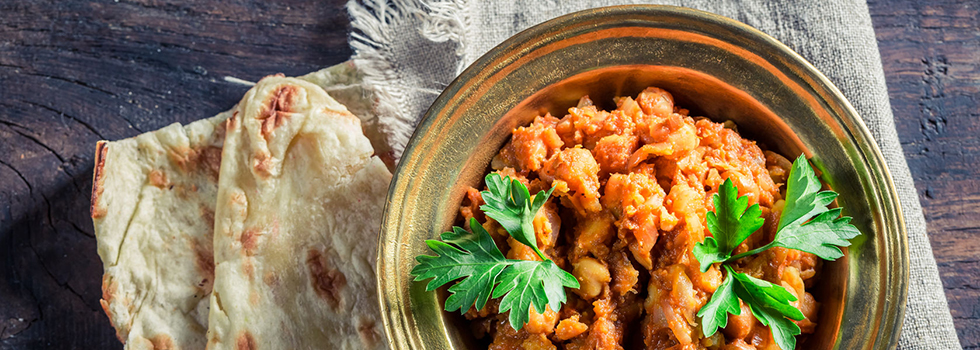
Accepting applications for the 2026-27 school year
Accepting applications for the 2026-27 school year

by Usha and Vasant Lad, BAM&S, MASc
It is no surprise to see on the market today so many digestive and dietary aids for the stomach, along with pills for gas and indigestion. Most of these conditions likely begin with poor food combining. This is a subject of much debate amid the growing concern about diet and the many theories on the topic.
Ayurveda, an ancient holistic science of healing, offers a logical approach for determining correct diet based upon the elements comprising an individual’s constitution: vata, pitta and kapha. This approach is quite different from the contemporary view of a balanced diet, based on eating from various food groups. Ayurveda believes that understanding the individual is the key to finding a truly balanced diet. It teaches that the gastric fire or agni in the stomach and digestive tract is the main gate through which nutrients enter the tissues and then pass along to individual cells, to maintain the life functions.
According to Ayurveda, every food has its own taste (rasa), a heating or cooling energy (virya) and a post-digestive effect (vipaka). Some also possess prabhava, an unexplained effect. So while it is true that an individual’s agni largely determines how well or poorly food is digested, food combinations are also of great importance. When two or more foods having different taste, energy and post-digestive effect are combined, agni can become overloaded, inhibiting the enzyme system and resulting in the production of toxins. Yet these same foods, if eaten separately, might well stimulate agni, be digested more quickly and even help to burn ama.
Poor combining can produce indigestion, fermentation, putrefaction and gas formation and, if prolonged, can lead to toxemia and disease. For example, eating bananas with milk can diminish agni, change the intestinal flora, produce toxins and may cause sinus congestion, cold, cough and allergies. Although both of these foods have a sweet taste and a cooling energy, their post-digestive effect is very different – bananas are sour while milk is sweet. This causes confusion to our digestive system and may result in toxins, allergies and other imbalances.
Similarly, milk and melons should not be eaten together. Both are cooling, but milk is laxative and melon diuretic. Milk requires more time for digestion. Moreover the stomach acid required to digest the melon causes the milk to curdle, so Ayurveda advises against taking milk with sour foods. These incompatible food combinations not only disturb the digestion but also cause confusion in the intelligence of our cells, which can lead to many different diseases.
Before you say “This is MUCH too complicated, how will I ever figure it out?”, there are some useful guidelines to introduce you to these concepts. And remember that Ayurveda is a strong proponent of the “go slowly” school of thought.
You might want to introduce yourself to food combining by eating fruit by itself, as many fruits create a sour and indigestible “wine” in the stomach when mixed with other food. Once you have adopted this change into your eating habits, try other suggestions from the list below. As a general principal, avoid eating lots of raw and cooked foods together or fresh foods with leftovers.
The following table lists some* of the incompatible food combinations worth avoiding.
| DON’T EAT | WITH |
|---|---|
| Beans | fruit; cheese, eggs, fish, milk, meat, yogurt |
| Eggs | fruit, especially melons; beans, cheese, fish, kitchari, MILK, meat, yogurt |
| Fruit | As a rule, with any other food. (There are exceptions, such as certain cooked combinations, as well as dates and milk, which have the same rasa, virya and vipaka.) |
| Grains | fruit; tapioca |
| Honey** | With equal GHEE by weight (e.g. 1 tsp. honey with 3 tsp. ghee); boiled or cooked honey. |
| Hot Drinks | mangos; cheese, fish, meat, starch, yogurt |
| Lemon | cucumbers, milk, tomatoes, yogurt |
| Melons | EVERYTHING – especially dairy, eggs, fried food, grains, starches. Melons more than most fruit should be eaten alone or left alone. |
| Milk | BANANAS, cherries, melons, sour fruits; bread containing yeast, fish, kitchari, meat, yogurt |
| Nightshades, e.g., potato, tomato | melon; cucumber, dairy products |
| Radishes | bananas, raisins; milk |
| Tapioca | fruit, especially banana and mango; beans, raisins, jaggary |
| Yogurt | fruit; cheese, eggs, fish, hot drinks, meat, MILK, nightshades |
*Foods in CAPITALS are the most difficult combinations.
**According to ancient Ayurvedic literature, honey should never be cooked. If cooked, the molecules become a non-homogenized glue that adheres to mucous membranes and clogs subtle channels, producing toxins. Uncooked honey is nectar. Cooked honey is considered poison.
© 1997, 2016. Amended extracts reprinted with permission from: Ayurvedic Cooking for Self-Healing by Usha and Dr. Vasant Lad, 1997.

The spiritual journey starts here

A native of India, he served for three years as Medical Director of the Ayurveda Hospital in Pune, India. He was Professor of Clinical Medicine at the Pune University College of Ayurvedic Medicine for 15 years. He holds a Bachelor’s of Ayurvedic Medicine and Surgery (BAM&S) degree from the University of Pune and a Master’s of Ayurvedic Science (MASc) degree from Tilak Ayurved Mahavidyalaya. The author of numerous books, Vasant Lad is respected throughout the world for his knowledge of Ayurveda.